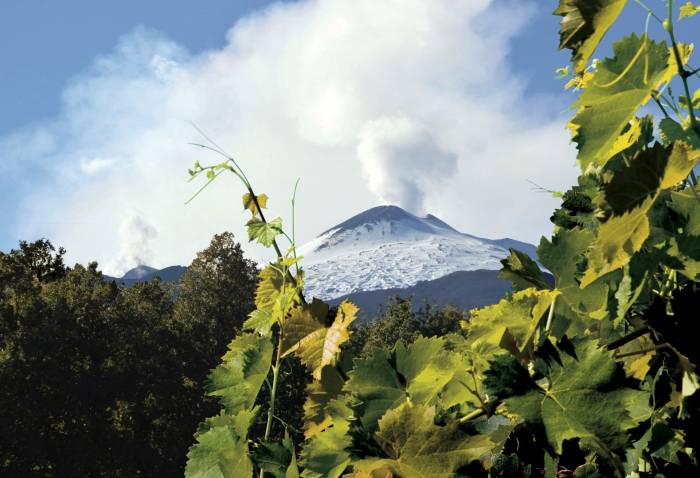Etna DOC Wine Exports Surpass 70% of Production as U.S. Sales Defy Tariffs and Climate Challenges
Sicilian region expands DOC vineyards by 200 hectares and sees sparkling wine output soar despite global market headwinds
2025-10-23

The Etna DOC wine region in Sicily is showing strong signs of recovery and resilience in 2024, following a challenging year in 2023. According to recent data, the area under vine claimed for DOC production has grown from 1,147 hectares in 2023 to 1,347 hectares in 2024. This expansion involves 474 winegrowers and marks a 69.7% increase in wine eligible for DOC status, surpassing 58,000 hectoliters. The figures were presented during the Etna Days 2025 event, where producers also reported stable or even growing sales in the United States, despite ongoing trade tensions and tariffs.
The last three harvests on Mount Etna have highlighted the region’s vulnerability to extreme weather. Producers have responded by adopting more sophisticated adaptation strategies. While the total volume of bottled wine in 2024 is just under 40,000 hectoliters—an 11.98% decrease from over 44,000 hectoliters in 2023—this level aligns with historical averages for the denomination. The drop in overall volume is attributed to lower yields in some categories, but there are notable exceptions. For example, Etna Spumante Rosato saw a 75% increase in production, reaching nearly 500 hectoliters, while Etna Spumante Bianco grew by almost 8%. These sparkling wines, made mainly from the Nerello Mascalese grape using the traditional method, are attracting increasing interest.
Etna Rosso remains the most produced category, with nearly 20,000 hectoliters bottled in 2024, a slight decrease of about 6% from the previous year. Etna Bianco and Etna Bianco Superiore both saw declines of around 16% and 12%, respectively. The most significant drop was in Etna Rosato, which fell by over 43%. Despite these fluctuations, the region’s reputation continues to grow internationally.
At Etna Days 2025, Francesco Cambria, president of the Consorzio di Tutela Vini Etna DOC, emphasized the global recognition achieved by the denomination. The United States remains the largest export market for Etna wines, accounting for about a quarter of all bottles sold abroad. Other key markets include Germany, the United Kingdom, Switzerland, and Scandinavian countries. Exports represent more than 70% of certified production, positioning Etna wines among Europe’s fine wine segment.
Producers report that the U.S. market has remained robust for Etna wines, even as tariffs and political uncertainty have affected other Italian wine regions. Many attribute this resilience to the high quality and strong reputation of Etna wines, as well as their relatively high price point. Giulia Monteleone of Monteleone winery noted that their U.S. sales are on track for a record year, as consumers willing to spend $90 or more on a bottle are less sensitive to price increases caused by tariffs. Other producers, such as Jacopo Maniaci of Tenuta di Fessina and Christian Liistro of Tenuta delle Terre Nere, echoed this sentiment, saying that while some lower-priced wines have been affected, premium Etna wines continue to perform well.
Some producers have absorbed part of the tariff costs themselves or worked with importers to minimize price increases for consumers. Emanuele Mazzoleni of Custodi delle Vigne dell’Etna observed that while there have been some delays in order fulfillment, overall sales numbers have held steady. Others, like Federico Graziani and Rossella Marino Abate of Firriato, pointed out that strong relationships with importers and a focus on quality have helped them weather the uncertainty.
Not all feedback is entirely positive. Some producers acknowledge that global market slowdowns and tariff-related challenges have made business more complicated. However, most agree that Etna’s small production volumes and high perceived value have shielded it from the worst effects. Alberto Tasca of Tasca d’Almerita described Etna as a niche market that is well-positioned to withstand volatility.
With ongoing uncertainty in U.S. trade policy, many Etna producers are looking to diversify their export markets. There is growing interest in Asia, particularly Japan and South Korea, as well as in Central and South America. Some wineries have recently established new partnerships in Brazil and other emerging markets. European countries, especially Germany and the Nordic nations, are also showing increased demand for Etna wines.
Producers like Giulia Monteleone see opportunities in South America if tariffs are reduced under new trade agreements. Others are exploring Australia and Southeast Asia as potential growth areas. In Europe, there is renewed interest from countries such as France, Belgium, Poland, and Portugal. Some producers report that new clients have sought them out directly, reflecting the strong brand positioning of Etna DOC.
Despite the challenges posed by climate change and international trade tensions, the Etna DOC region continues to attract attention for its unique volcanic terroir and high-quality wines. The combination of tradition and innovation is helping producers adapt to changing conditions while maintaining a strong presence in both established and emerging markets. As global wine markets evolve, Etna’s producers remain optimistic about their ability to navigate uncertainty and sustain growth.
Founded in 2007, Vinetur® is a registered trademark of VGSC S.L. with a long history in the wine industry.
VGSC, S.L. with VAT number B70255591 is a spanish company legally registered in the Commercial Register of the city of Santiago de Compostela, with registration number: Bulletin 181, Reference 356049 in Volume 13, Page 107, Section 6, Sheet 45028, Entry 2.
Email: [email protected]
Headquarters and offices located in Vilagarcia de Arousa, Spain.